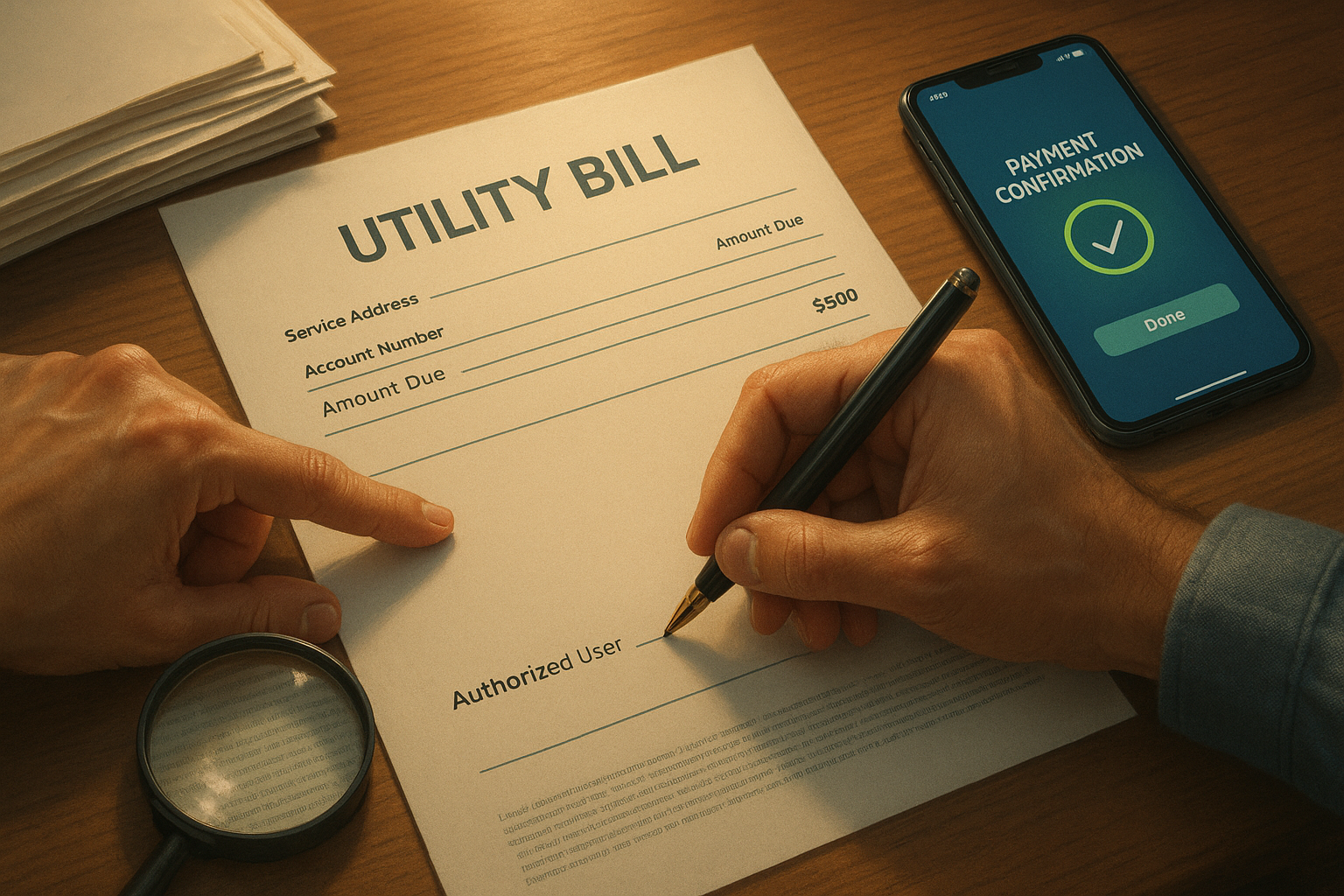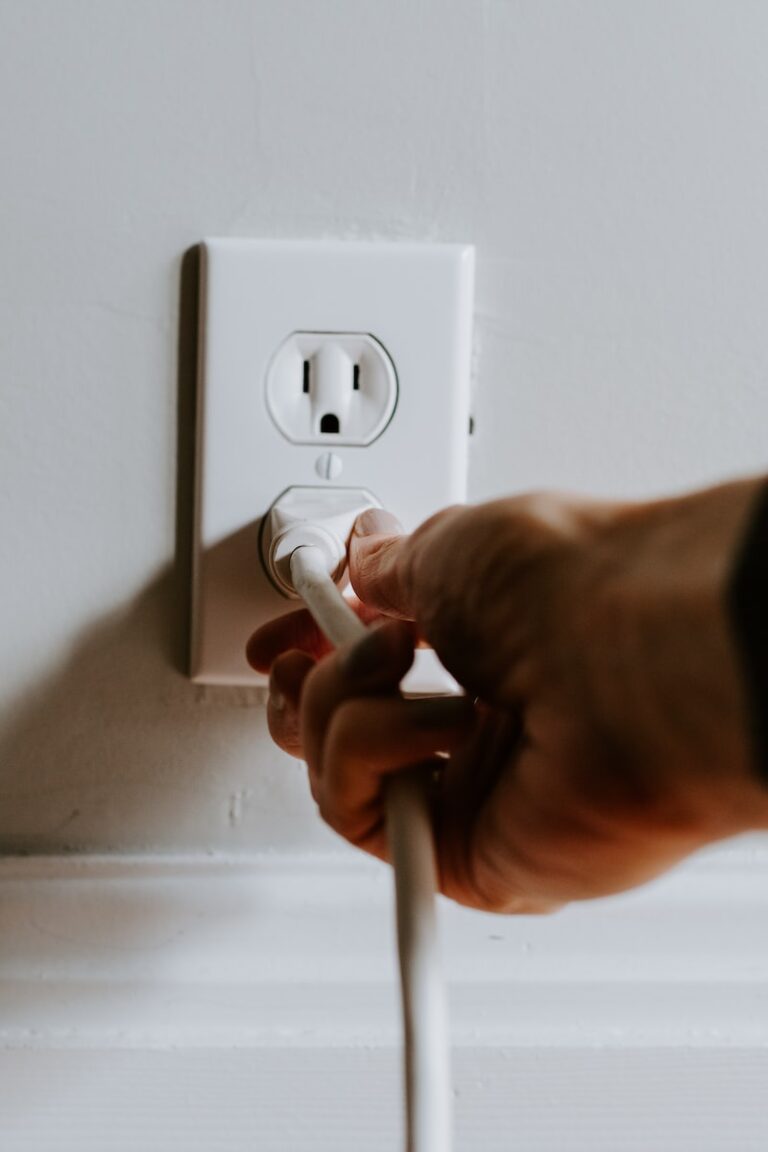How to Add a Name to Your Utility Bill (Step-by-Step Guide)
Adding a name to a utility bill is a common but often overlooked task that plays a crucial role in shared living arrangements, property ownership transitions, and legal compliance.
Whether you’re updating your account after marriage, moving into a rental, or transferring services after purchasing a home, this guide will walk you through every possible scenario with detailed instructions, documentation requirements, and expert tips.
Why Should You Add a Name to a Utility Bill?
There are several important reasons why you might need to update the name(s) listed on your utility bill:
Shared Financial Responsibility
Allowing another person to be added as a co-account holder ensures they can manage payments, receive billing updates, and take responsibility for service continuity.
Proof of Residency
Utility bills are widely accepted as proof of address for government services, school enrollments, driver’s licenses, and other official documents.
Lease Compliance
Many landlords require tenants to hold utility accounts in their names to ensure accountability and prevent unpaid balances.
Account Continuity During Life Changes
Whether due to marriage, divorce, death, or relocation, keeping utility accounts up-to-date helps avoid disruptions in service and billing confusion.
1. Adding a Secondary Name (e.g., Spouse, Roommate, or Business Partner)
This method is ideal for individuals who want to share access to the utility account without fully transferring ownership.
What Does It Mean?
A secondary user can:
- View bills and usage data
- Make payments
- Update contact information
- Receive notifications
However, they cannot close the account, change the primary account holder, or access sensitive personal information like Social Security Numbers.
Step-by-Step Process
1. Contact Your Utility Provider
Reach out via:
- Phone call
- Online portal
- In-person visit to a local office
Providers like Xfinity , PG&E , and Austin Utilities offer online options for adding authorized users.
2. Choose the Authorization Level
You’ll typically have two options:
- Financially Responsible User : Full access to manage payments and account details.
- Limited Access User : View-only access (e.g., for accountants or third-party managers).
Some providers may require a Release of Information Authorization form for limited access.
3. Submit Required Documents
Most providers will ask for:
- Government-issued photo ID (driver’s license, passport)
- Proof of residence (lease agreement, mortgage statement)
- Signed authorization form (some companies require notarization)
4. Complete the Request
Options include:
- Online Portal : Log in to your account and use the “Add Authorized User” feature.
- Phone/In Person : Provide the full name, relationship, and ID of the new user.
- Written Form : Send a notarized letter or form by mail or email.
5. Verify the Update
Check your next bill to confirm the new name appears. It may take 1–2 billing cycles for changes to reflect.
Common Challenges & Solutions
| Issue | Solution |
|---|---|
| Credit check required | Some providers may run a credit check for financially responsible users. |
| Only residents allowed | Confirm whether the provider restricts additions to those living at the address. |
| Missing documents | Keep copies of all forms and IDs handy before contacting the provider. |
Table: Methods to Add a Secondary Name
| Method | Process | Documents Required |
|---|---|---|
| Online Portal | Submit via account dashboard | ID, proof of address |
| Phone/In-Person | Speak to customer service | ID, signed authorization form |
| Written Form | Mail/fax aLetter of Authorization | Notarized form with account details |
2. Transferring Account Ownership (e.g., After Moving In or Out)
This applies when you’re taking over or handing off a utility account—common in rentals or when selling/buying a home.
Step-by-Step Process
1. Initiate the Transfer Early
Start the process at least two weeks before your move-in or move-out date to avoid service interruptions.
2. Gather Necessary Documentation
Depends on your situation:
- Renters :
- Copy of lease agreement
- Government-issued ID
- Landlord-signed Owner Authorization Form
- Homeowners :
- Property deed or title
- Closing documents
- Photo ID
3. Pay Deposits or Fees
You may be asked to pay:
- Security deposit (varies by location and credit score)
- Service reconnection fee (if service was disconnected)
- Processing fee
Example: In Durango, CO , deposits start at $75 , while reconnection fees range from $25–$65 .
4. Schedule Transfer Date
Coordinate with the provider to set a specific date for the transfer, ideally matching your move-in/out day.
Potential Pitfalls
| Issue | Explanation |
|---|---|
| Delayed transfers | If not completed on time, the previous owner remains liable. |
| Overlapping bills | Most companies don’t allow dual billing during transition, complicating verification. |
| Deposit refund delays | Ask about refund timelines—many return deposits after 12 months of timely payments. |
3. Adding a Name After Property Purchase
When you become a homeowner, it’s essential to update utility accounts under your name to establish legal ownership and avoid billing issues.
Step-by-Step Process
1. Submit Proof of Ownership
Provide one or more of the following:
- Property deed
- Title company confirmation
- Closing documents
2. Complete Ownership Change Form
Fill out a Change of Ownership form available from:
- The utility provider’s website
- Local City Hall or municipal office
- Title company during closing
3. Visit the Utility Office
Some cities (like those in Utah ) require in-person visits with:
- Photo ID
- Deed or title
- Completed forms
4. Optional: Add Additional Users
Follow the steps outlined in Section 1 to add a spouse or co-owner.
4. Special Scenarios & Pro Tips
For Businesses or Multi-Property Owners
Managing utilities across multiple locations can be complex. Consider these strategies:
- Outsource Management : Use services like Cost Control Associates to handle multi-location billing, payment processing, and error detection.
- Centralized Billing Systems : Implement digital tools to track usage, set alerts for late fees, and audit invoices regularly.
- Consolidated Accounts : Some providers offer consolidated billing for businesses or landlords managing multiple properties.
Avoiding Common Mistakes
| Mistake | Tip |
|---|---|
| Starting too late | Begin the process10+ daysahead of deadlines. |
| Mismatched documents | Ensure all names and addresses match exactly on submitted documents. |
| Ignoring refund policies | Ask about deposit returns and cancellation terms upfront. |
Legal Considerations
- Joint Liability : Any person added as a financially responsible user shares liability for unpaid bills.
- Identity Fraud Risk : Never sign checks or authorize payments using someone else’s name unless explicitly authorized.
- Termination Rights : Know the conditions under which a provider can cancel or suspend service.
Document Checklist by Scenario
| Scenario | Required Documents | Submission Method |
|---|---|---|
| Adding Spouse/Roommate | ID, proof of address, signed authorization | Online, phone, or in-person |
| Tenant Transfer | Lease, Owner Authorization Form, ID | In-person or mail |
| Property Purchase | Property deed, ID, Ownership Change form | In-person |
Troubleshooting & FAQs
Q: Can I add a name without visiting an office?
A: Yes, many providers (e.g., Austin Utilities ) allow online submissions through their customer portals.
Q: Why was my request denied?
A: Possible reasons include incomplete documentation, mismatched IDs, or unresolved credit issues.
Q: How long until the new name appears on bills?
A: Typically within 1–2 billing cycles , though some providers may take longer depending on processing times.
Q: Can I remove a name later?
A: Yes, follow the same process but select the “remove” option. You may need written consent from the person being removed.
Ensuring Seamless Utility Account Updates
Updating your utility bill with the correct names is more than just a formality—it’s a critical step in maintaining clear financial records, legal compliance, and uninterrupted service. By understanding the different scenarios and preparing the necessary documentation, you can streamline the process and avoid unnecessary stress.
Pro Tips for Success
- Always verify provider-specific requirements—they vary by region and utility type.
- Use digital tools like provider apps or third-party platforms to automate payments and track usage.
- Save all forms, emails, and receipts related to the name addition or transfer.
- Set reminders for future actions like deposit refunds or annual account reviews.
Need Forms? Visit your utility provider’s official website or local government portal to download documents like:
- Letter of Authorization
- Ownership Change Form
- Release of Information Form
By following this comprehensive guide, you’ll be well-equipped to manage your utility accounts confidently—whether you’re sharing responsibilities with a partner, transitioning into a new home, or managing business utilities.





